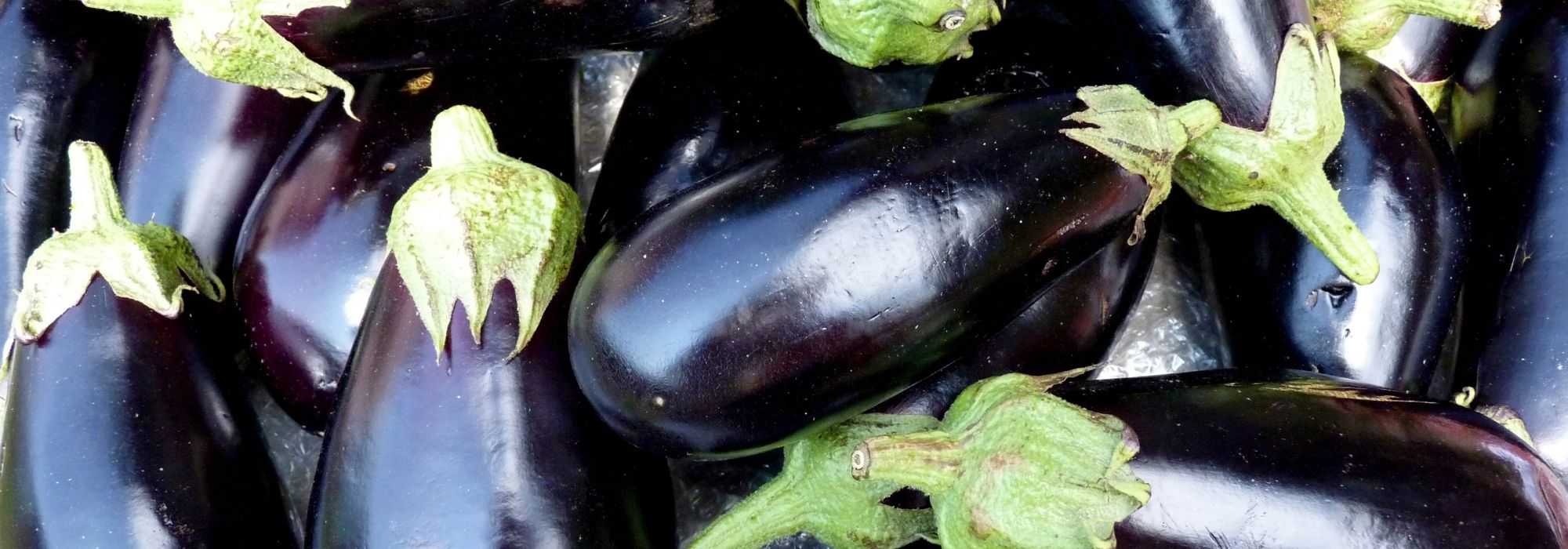
Aubergine, eggplant: sowing, growing, harvesting
Contents
Aubergine in a nutshell
- Aubergine is a vegetable plant that produces fleshy fruits with smooth, shiny skin, consumed as a vegetable.
- They come in all colours, from purple to white, and in various shapes, from round to elongated.
- It is an essential sun-loving vegetable in the summer garden.
- It lends itself to numerous recipes and can be prepared sautéed or stuffed in the oven; it is indispensable in ratatouille or with mozzarella!
- Easy to grow, whether in soil or in pots, it requires only warmth, sunlight, and a bit of water to produce beautiful fruits.
A word from our expert
Aubergine (Solanum melongena) is a vegetable plant from the Solanaceae family, whose fleshy fruits are consumed as vegetables. Alongside the classic varieties with black-purple skin that have given their name to a colour, there are many shapes and colours, from white to green, including striped ones, round ones, and aubergines shaped like pears, eggs, or very elongated ones!
Its taste and nutritional qualities are well established, and it pairs perfectly with other sun vegetables. Once cooked, its flesh reveals a subtle flavour and lends itself to numerous recipes, whether stuffed, pan-roasted, or grilled in the oven, in a gratin with mozzarella, as caviar, in ratatouille, or in Greek moussaka.
Symbolic of summer and Mediterranean cuisine, its cultivation requires plenty of sun and warmth, as well as ample water to produce beautiful fruits. Compact in size, aubergine plants can also be found on balconies or very sunny terraces.
Sowing should be done under cover from February to May, for a harvest from July to October. Planting should only occur after the frost in well-warmed soil and will require a warm, sheltered location.
Choose from our beautiful collection of aubergine seeds to sow or pots to plant and enjoy this highly prized vegetable in the South!
Description and botany
Botanical data
- Latin name Solanum melongena
- Family Solanaceae
- Common name Aubergine
- Flowering June to September
- Height 0.60 to 1 m
- Exposure Sun
- Soil type rich and light, cool
- Hardiness frost-sensitive
Aubergine (Solanum melongena) is a fruit-vegetable from the Solanaceae family, like tomatoes (Solanum lycopersicum), peppers, and potatoes (Solanum tuberosum). Native to North Africa, it has been cultivated for its edible fruits in India and China since antiquity and was introduced to Europe around the 14th century, arriving in France in the 17th century. China and India are the two largest producers of aubergines.
The genus Solanum comprises about 150 species. Today, there are many varieties of aubergines derived from the species Solanum melongena: over 250 recorded, differing in their earliness, colour, or shape of their fruit.
Perennial in its native regions, this vegetable plant is grown as an annual in our latitudes.
Aubergine develops from a long and vigorous taproot. It has a bushy habit and quickly forms an upright, bushy clump 25 cm to 1 m tall, depending on the climate and variety. After planting, it takes 4 to 6 months to see the fruits appear.
The leaves develop on a cylindrical, tough, sparsely branched stem, reddish in colour, sometimes purplish, cottony, and occasionally spiny. It bears large, deciduous, alternate, entire, oval leaves, sometimes lobed, measuring 6 to 10 cm long. They are covered with a powdery down and can even be spiny. They range in colour from medium green to glaucous green.
The flowers that will turn into fruits appear from June to September, borne singly or more often in pairs in the axils of the leaves. They are encased in a spiny calyx and display campanulate corollas made up of 6 triangular petals. They release a bouquet of yellow stamens arranged in stars, contrasting with the purplish or white colour of the petals.
They transform into fruits, large, fleshy berries with smooth, shiny skin: the aubergines. Aubergines come in all colours (dark purple, almost black—aubergine colour—like ‘Black Beauty’, of course, but also white, striped, lavender pink, and even some rarer varieties, green, red, and yellow), in all shapes and sizes. They typically weigh between 250 and 300 grams for the largest. As the fruit ripens, the peduncles swell and bend, tightening around the base of the berry.

Depending on the varieties, the fruits take on various shapes: ovoid, pear-shaped, spherical in the “Ronde de Valence”, cylindrical or elongated in the “Barbentane” aubergine, even resembling a hen’s egg in the “egg aubergine”.
All have tender flesh with a sweet, subtle, and complex flavour, reminiscent of mushrooms.
The flesh has a spongy texture due to a high saponin content. It contains small, kidney-shaped, flat seeds of light brown colour.
Read also
Succeeding in growing auberginesMain species and varieties
You will find grafted aubergine plants in plug plants in our online shop. Grafted plants allow for a quicker and more abundant harvest, are more resilient to harsh outdoor conditions (cold climates) and will yield significantly more than a non-grafted plant.
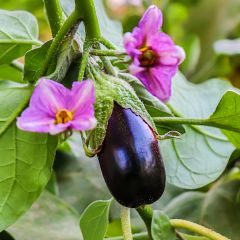
Aubergine Black Beauty - Eggplant
- Flowering time June to August
- Height at maturity 1 m
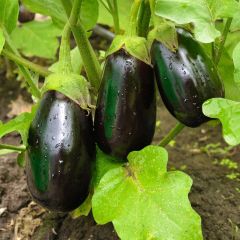
Aubergine Bonica F1 - Eggplant
- Height at maturity 80 cm
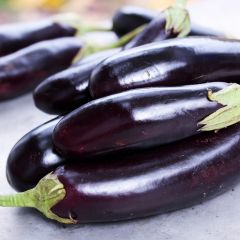
Aubergine Violette longue de Barbentane
- Height at maturity 80 cm
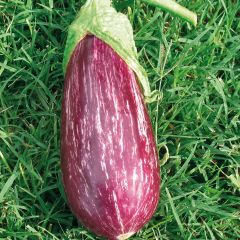
Aubergine Rania F1 in GRAFTED seedlings
- Flowering time July to October
- Height at maturity 60 cm
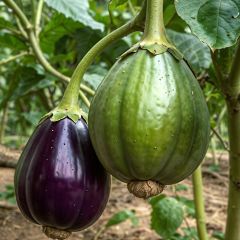
Aubergine Rotonda Bianca Sfumata Di Rosa - Ferme de Sainte Marthe seeds
- Flowering time July to October
- Height at maturity 30 cm
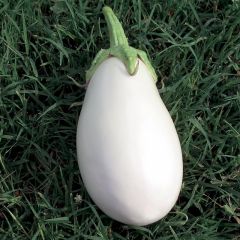
Aubergine Clara F1 in GRAFTED plants
- Flowering time July to October
- Height at maturity 60 cm
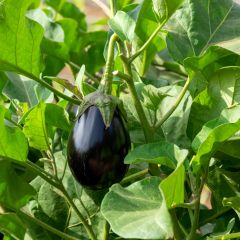
Aubergine Grafted Bonica F1 Plants
- Flowering time July to October
- Height at maturity 60 cm
Discover other Eggplant seeds
View all →Available in 1 sizes
Available in 1 sizes
Available in 1 sizes
Available in 1 sizes
Available in 1 sizes
Available in 1 sizes
Available in 1 sizes
Available in 1 sizes
Available in 1 sizes
Planting and sowing
Eggplant can be sown or planted: discover our collection of eggplant seeds or our young plants in pots.
Where to plant aubergines?
Eggplant is not hardy; native to warm countries, it thrives in sunlight and requires heat to grow. It is cultivated as an annual in our vegetable gardens. It prefers rich, humus-filled, cool, well-drained soil, in full sun, in a sheltered spot, such as against a south-facing wall. In the vegetable gardens north of the Loire and in humid regions, it is better to grow it under glass.
While eggplant naturally finds its place in a vegetable garden, whether in open ground or in raised beds, it can also be grown in pots on a very sunny balcony or terrace.
When and how to plant?
Sunlight and heat play a crucial role in the success of eggplant cultivation. Eggplant should never be planted in pots in open ground before mid-May or June, after the last frosts. In regions north of the Loire, you can start eggplant seedlings in a warm place before transplanting them to the garden. The soil must be warm enough, with outdoor temperatures above 12°C, ideally at least 20°C. Prepare the ground in autumn with a good vegetable fertiliser and well-decomposed compost. At planting, you can lighten the substrate with a bit of sand if it is too compact.
- Soak the root ball in water for a few minutes before planting
- Maintain a distance of about 50 cm to 1 m in all directions to allow the plants to develop well
- Dig a hole three times the volume of the root ball
- Plant your young plant with the grafting point level with the soil
- Cover with fine, light soil mixed with some well-matured compost and a bit of sand
- Water generously, then once a week to aid recovery, but always without wetting the foliage
- Mulch to keep the soil cool in summer and protect against slugs
- In cooler regions, at the start of the growing season, protect young plants from the cold with a mini-tunnel, cloche, or frame
Read also
Choosing auberginesWhen and how to sow aubergine?
Aubergine sowing is done in a warm environment, starting in February for a summer harvest. The harvest occurs approximately 5 months after sowing.
Sowing under cover
Sowing can be done in trays or pots. To facilitate germination, it is sometimes advisable to stratify the seeds for a few days in the vegetable drawer of the refrigerator at 4 to 5°C.
- Sow 2 to 3 seeds per pot in fine potting soil, and keep warm indoors at 25 °C, in a bright location.
- Keep the substrate moist by watering regularly until germination, which generally takes 7 to 10 days.
- When the young plants have 5 to 6 leaves, transplant them into individual pots or directly into the ground when there is no more frost: choose the sunniest and warmest spots in the garden.
- Space the plants 50 cm apart in all directions: they can be buried up to the first leaves.
- Cover with fine soil to a depth of 1 cm.
- Water generously and keep the soil cool with a mulch.
- Optionally cover with a forcing bell to encourage recovery.
- From April onwards, you can sow directly in the ground at the final location.
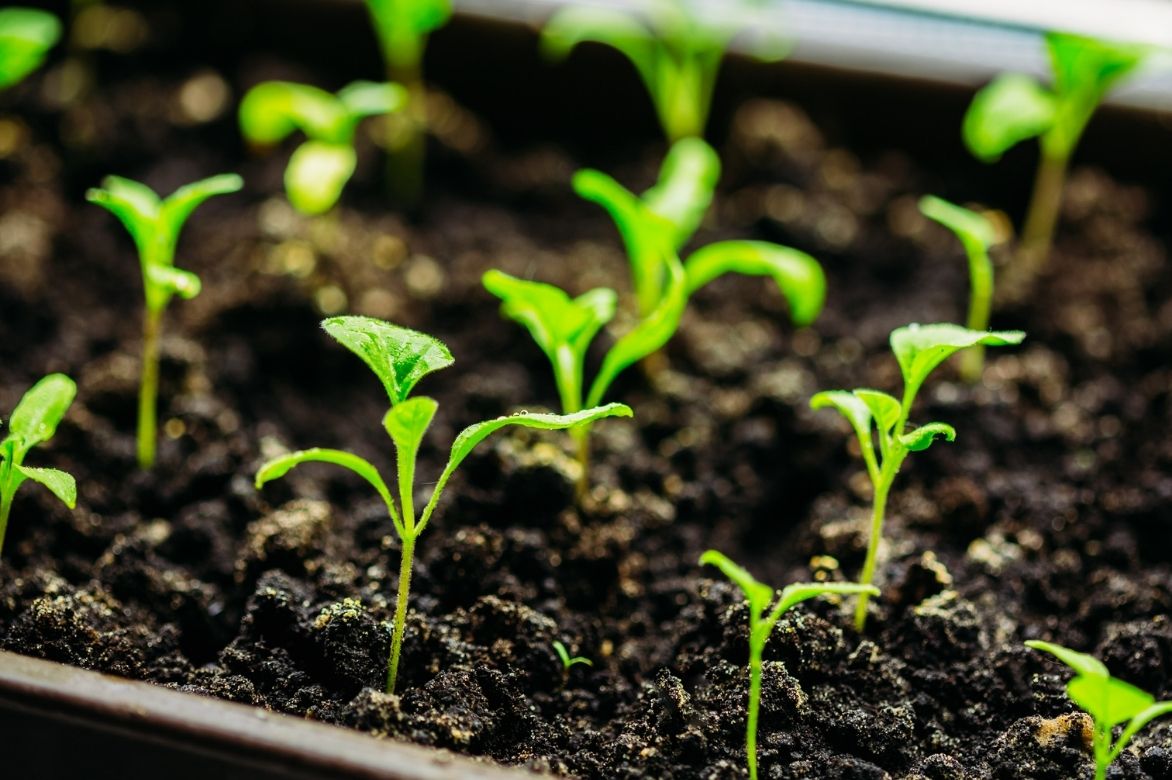
Aubergine sowing
Direct sowing
You can also sow directly in place from May, when the soil is well warmed.
- Sow 2 to 4 seeds in clusters in well-loosened soil enriched with well-decomposed compost.
- Water generously.
- When the seedlings have at least 5 leaves, thin them out, keeping only the strongest: leave 1m between each row and 50 cm between each plant.
Learn more in our tutorial: How to succeed with your aubergine sowing?
Growing, maintenance and pruning
The aubergine requires relatively little maintenance apart from regular weeding, hoeing, and watering. Applying a good mulch will help keep the soil cool and reduce weeding. It needs plenty of water.
Water regularly, but without excess, ensuring not to wet the foliage to prevent the onset of fungal diseases such as downy mildew.
Remove the suckers (the new shoots) as they develop in the axil of the leaves and at the base of the plant.
At the end of autumn or very early spring, add decomposed compost (3 kg/m²).
During growth, regularly amend potted young plants with a liquid fertiliser rich in potash and magnesium.
Pruning
An aubergine plant must be pruned to be productive: your plant should produce 7 to 8 fruits. Simply pinch the tips of the branches to encourage the plant to branch out and promote the swelling of the fruits; this ensures beautiful aubergines:
- Cut the main stem above the second flower.
- Allow three of the most vigorous secondary branches to develop, and pinch them in turn as soon as they show 2 flowers.
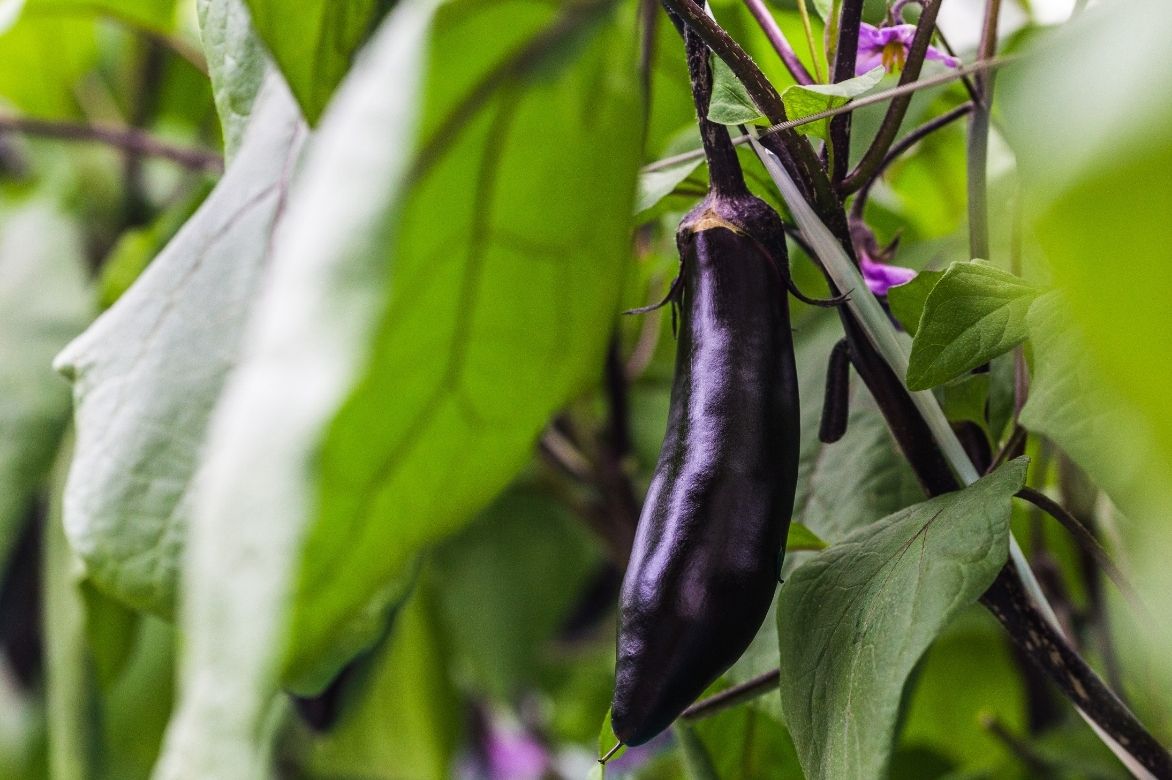
Diseases and pests
Young plants of aubergine can be susceptible to several fungal diseases that affect their leaves.
To prevent the appearance of downy mildew, which manifests as grey-green and white fluff on the foliage, spray with Bordeaux mixture as soon as symptoms appear and burn the affected leaves.
Against powdery mildew, which also leaves a white fluff on the leaves, discover our natural solutions.
To avoid diseases, and because young plants of aubergine are very greedy, encourage crop rotation: wait 2 to 3 years before replanting in the same spot.
To combat whitefly, which feeds on the sap of the plant and weakens it, we provide all the advice in a dedicated sheet.
To prevent attacks from red spider mites, treat the young plants preventively with horsetail and nettle manure decoctions. In case of infestations, remove and burn the diseased parts.
Aubergine is also sometimes unfortunately a victim of the leaf miner, which can destroy the entire harvest.
To deter snails and slugs from attacking the young foliage of your aubergines: discover our natural anti-slug solutions and our 7 ways to fight slugs effectively and naturally.
→ Learn more about diseases and pests of aubergine in our advice sheet.
Multiplication
Aubergine is propagated by sowing. You can harvest the seeds contained in the flesh of your own aubergines, dry them in the shade, and store them in a paper bag until the following spring. Sow according to our instructions (above).
Harvest and storage
When and how to harvest?
Harvest: Harvesting takes place from July to October, with aubergines being picked as needed. Gather them when the skin has the indicated colour, is smooth and shiny, thin, and while remaining firm, shows a slight softness. The peduncle should be bright green. It is better to consume aubergines at good ripeness: pick them before the fruit takes on a dull brown colour, as when the flesh hardens and wrinkles, it develops an unpleasant bitter taste. For better preservation, harvest the fruit using pruning shears with its peduncle.
Storage:
Once picked, aubergines should be consumed quickly. They keep well for a few days in the vegetable drawer of your refrigerator or spread out in the open air. To keep them longer, you can make caviar or preserves. They freeze perfectly once cooked.
Culinary uses and nutritional benefits
Aubergine is a staple of Mediterranean vegetables. It is only cooked, with the skin after being washed in cold . It features in sunny recipes such as ratatouille or Greek moussaka. It can be eaten stuffed, with cream, in fritters, as caviar, sautéed in olive oil, in gratins, or in lasagne.
It pairs remarkably well with other sun vegetables like tomatoes, peppers, and courgettes.
Aubergine has calming and diuretic properties and contains vitamins A, B1, B2, B5, C, and PP, as well as iron, selenium, and calcium. It is rich in antioxidants. It is the ideal vegetable for detoxifying the body. Very low in calories, it is the ultimate slimming vegetable.
→ Discover a different way to cook aubergine with Gwenaëlle’s aubergine jam recipe!
Good companions for aubergine
In the vegetable garden, the winning companions for aubergine are often the same as those on the plate. This fruit-vegetable will make good neighbours with tomato, pepper, courgette, pea, and dwarf bean. In terms of herbs, it will appreciate the company of basil, tarragon, thyme, and parsley. However, the presence of onion and potato nearby may not be to its liking.
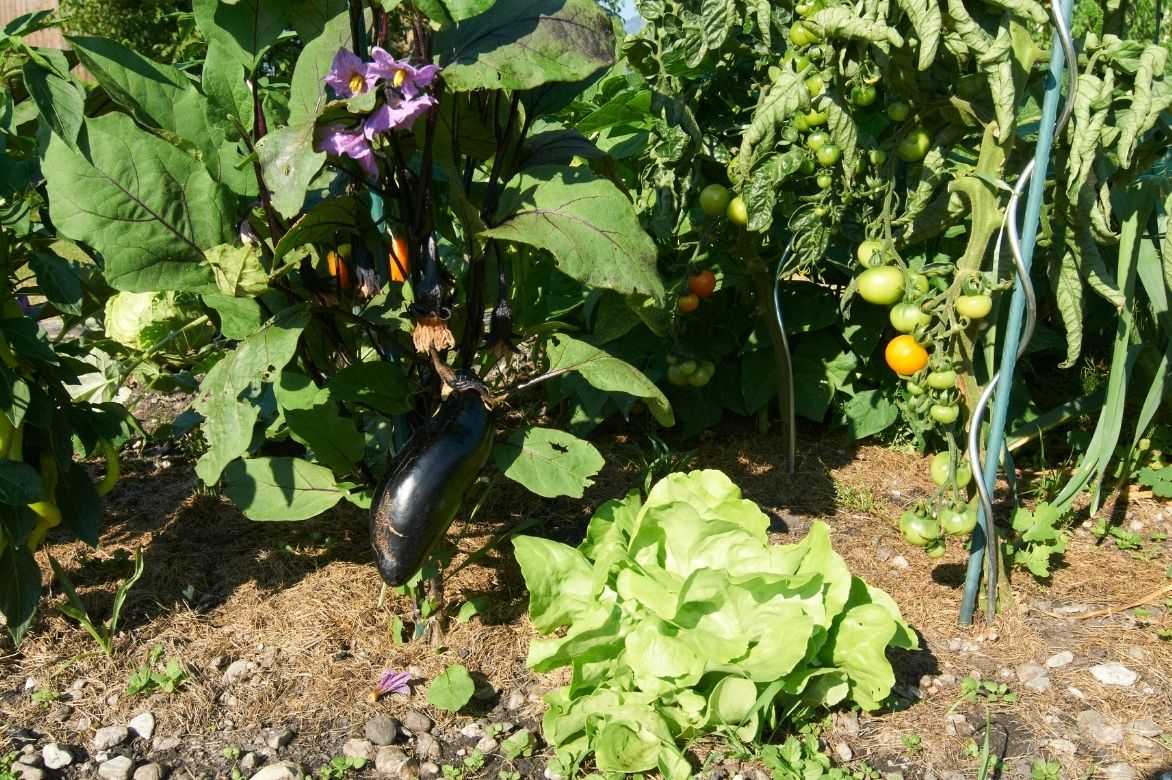
Useful resources
- Discover in our online shop our beautiful collection of aubergines to sow or plant
- Our article: Aubergines, the best varieties
- Our article: Aubergines, 6 varieties for beginners
- Gwenaëlle talks about the origins of aubergine and other vegetables in Where do our favourite vegetables come from? Their history revealed.
- Subscribe!
- Contents
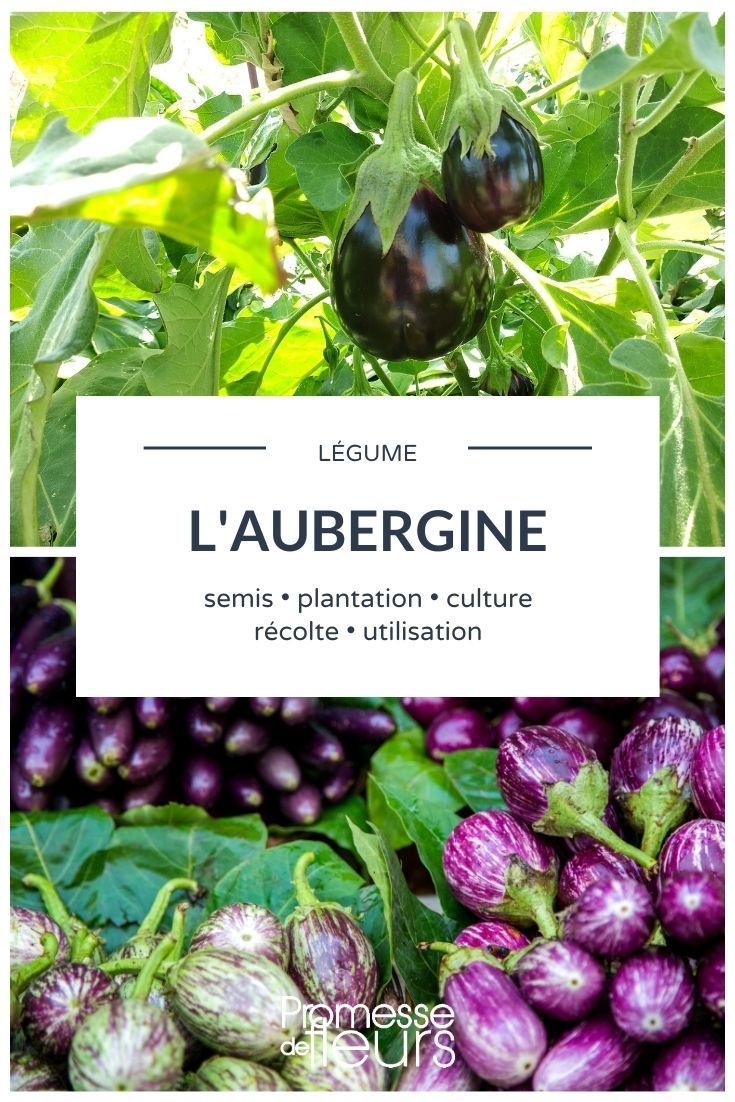
































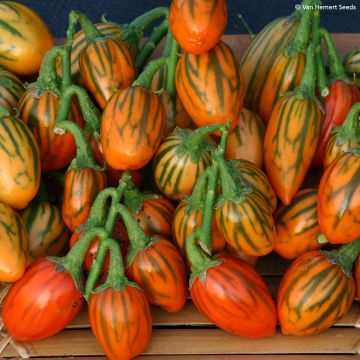

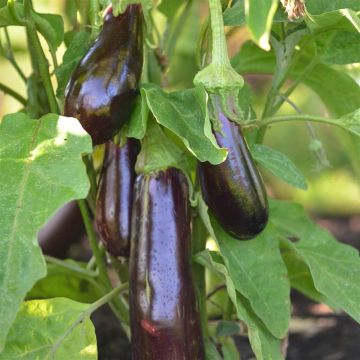
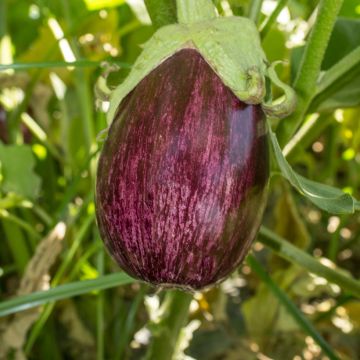
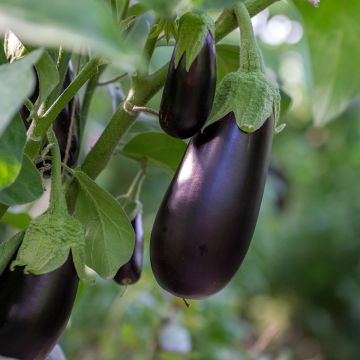
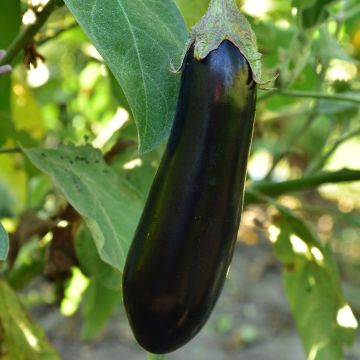
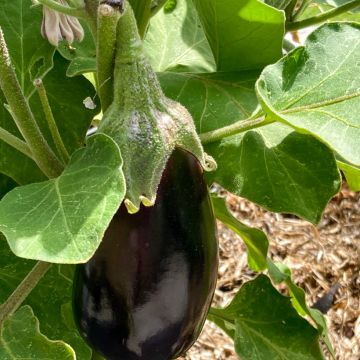
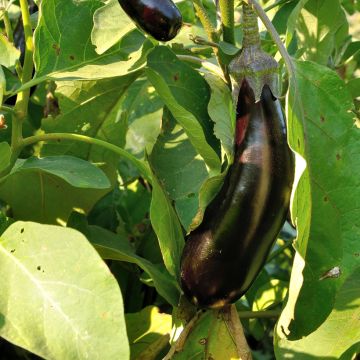
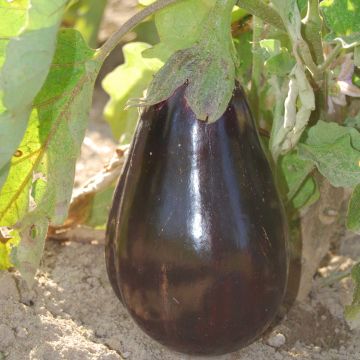
Comments